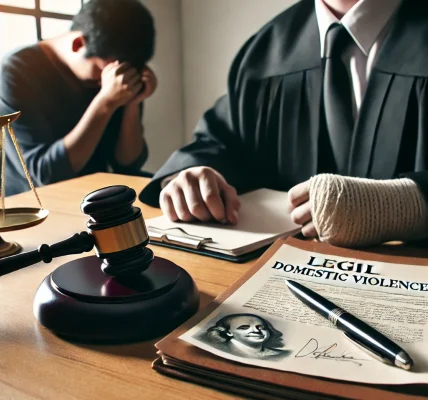Introduction:
Divorce can be an emotionally and financially draining process. One of the biggest concerns for individuals going through a divorce is how to protect their assets. Whether you’ve accumulated wealth over the years or have assets tied up in investments, businesses, or properties, safeguarding these resources is critical. This guide will walk you through the best steps to take to protect your assets during a divorce, so you can move forward without compromising your financial future.
1. Understand Your Assets: A Detailed Inventory
Before you can protect your assets, you need to know exactly what you have. This includes everything from real estate and personal property to investments and retirement accounts. A comprehensive list of your assets can help you make informed decisions about what needs protection.
Key steps:
- List all personal and joint assets (homes, cars, investments, savings accounts, etc.)
- Take inventory of valuable items like art, jewelry, and collectibles.
- Be sure to include any business interests, shares, and intellectual property rights.
2. Separate Personal and Marital Assets
In many jurisdictions, the division of assets during a divorce is based on whether they are classified as marital property or separate property. Understanding the distinction between these two is essential to protecting what is rightfully yours.
- Marital property: Property acquired during the marriage, including joint accounts and assets bought with joint funds.
- Separate property: Assets that were owned prior to marriage or acquired through inheritance or gifts during the marriage.
To protect your assets, make sure to keep a clear distinction between these types of assets. If you have assets that are considered separate property, it’s important to prove that they were not commingled with marital property.
3. Create a Postnuptial Agreement (If Applicable)
If you are already married and foresee a divorce in the future, it may be wise to create a postnuptial agreement. A postnuptial agreement works similarly to a prenuptial agreement, but it’s made after the marriage has taken place.
- Purpose: It allows couples to decide how assets will be divided in the event of a divorce.
- How it helps: It provides clarity and legally binding rules for asset division, thus reducing the chances of disputes later on.
Ensure the postnuptial agreement is crafted under legal counsel to avoid any potential challenges in court.
4. Keep Financial Records Updated and Organized
One of the best ways to protect your assets is by keeping accurate and up-to-date financial records. This includes tax returns, bank statements, credit card statements, and receipts for large purchases. When it comes time for asset division, having these records will make it easier to prove ownership and value.
- Regularly back up your financial records (cloud storage is a safe option).
- Ensure that joint accounts or assets are clearly tracked and separated.
5. Consider Setting Up a Trust
If you want to protect certain assets from being divided in a divorce, consider setting up a trust. Trusts are often used to protect significant assets such as real estate, businesses, and financial investments. These legal tools can help ensure that the designated beneficiaries retain ownership.
- Revocable Trust: Allows you to control the assets during your lifetime and is amendable.
- Irrevocable Trust: Once set, you lose control of the assets, but they’re typically not subject to divorce settlement.
Consult with a financial planner or attorney to set up a trust that aligns with your goals.
6. Understand State Laws on Asset Division
Every state or jurisdiction has its own laws regarding asset division during divorce. These laws can affect how your assets are divided and what you may be entitled to keep.
- Equitable distribution states: Assets are divided fairly, but not necessarily equally.
- Community property states: Assets are divided equally between both spouses.
Familiarize yourself with the laws in your jurisdiction or consult a family law attorney to ensure your assets are protected according to the local legal standards.
7. Protect Your Business Interests
If you own a business, it’s crucial to safeguard it during a divorce. Business ownership can complicate asset division, as the spouse may have a claim to a portion of the business.
What you can do:
- If possible, keep your business finances separate from personal finances.
- Consider establishing a legal agreement, such as a buy-sell agreement, to protect the business in the event of a divorce.
- Get a professional business valuation to ensure its worth is properly assessed.
8. Seek Legal Advice from a Divorce Lawyer
Consulting with a divorce lawyer who specializes in asset protection is one of the most important steps in ensuring that your assets remain protected. An experienced lawyer can guide you through the legal processes and help you understand your rights.
- Why it matters: Lawyers are well-versed in the nuances of asset division laws and can provide tailored advice.
- Important point: Avoid trying to hide assets. Attempting to conceal assets can result in legal penalties, including being penalized during the asset division process.
9. Consider Mediation as an Alternative
In some cases, mediation can help both parties reach a fair and amicable settlement regarding the division of assets. Mediation is typically less adversarial and may allow both parties to retain more control over the outcome.
- Benefit: Mediation can often result in a more equitable division without the need for a lengthy court battle.
- How it helps: Both spouses may agree to a settlement that is more in line with both of their needs, protecting their individual assets.
10. Protect Your Retirement and Investment Accounts
Retirement accounts, such as 401(k)s or pensions, are often considered marital property and subject to division in a divorce. However, there are strategies to protect these assets:
- QDRO (Qualified Domestic Relations Order): This is a legal order used to divide retirement plans during a divorce.
- Ensure proper documentation to show the balance and contributions made before and during the marriage.
Conclusion:
Divorce is undeniably challenging, but by taking proactive steps to protect your assets, you can reduce the stress and financial impact. From understanding what constitutes marital property to working with legal and financial professionals, there are many strategies available to help you safeguard your wealth. Always consult with professionals, as every situation is unique, and ensuring your assets are protected requires personalized advice. By staying informed and prepared, you can navigate the divorce process more effectively and maintain financial security for your future.




